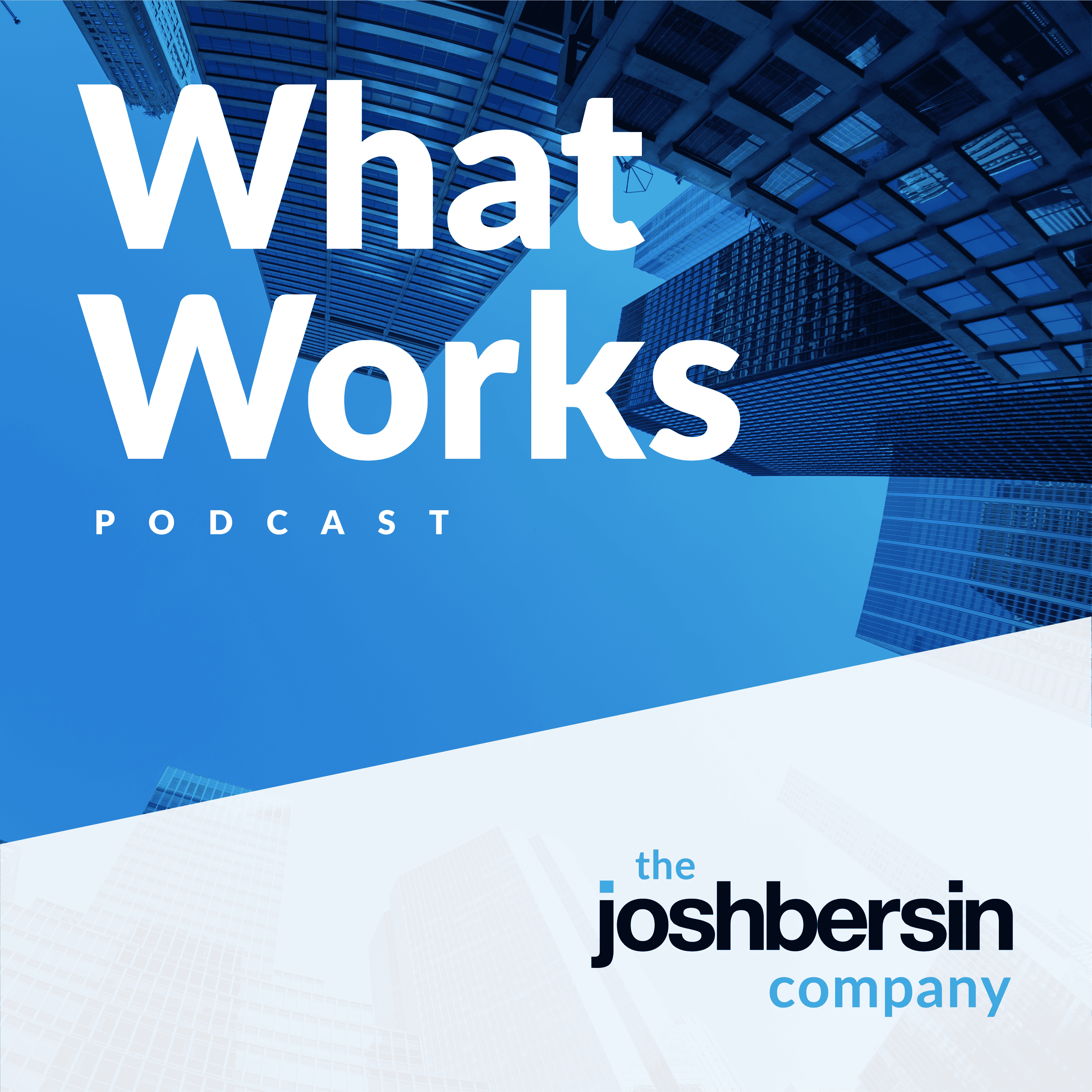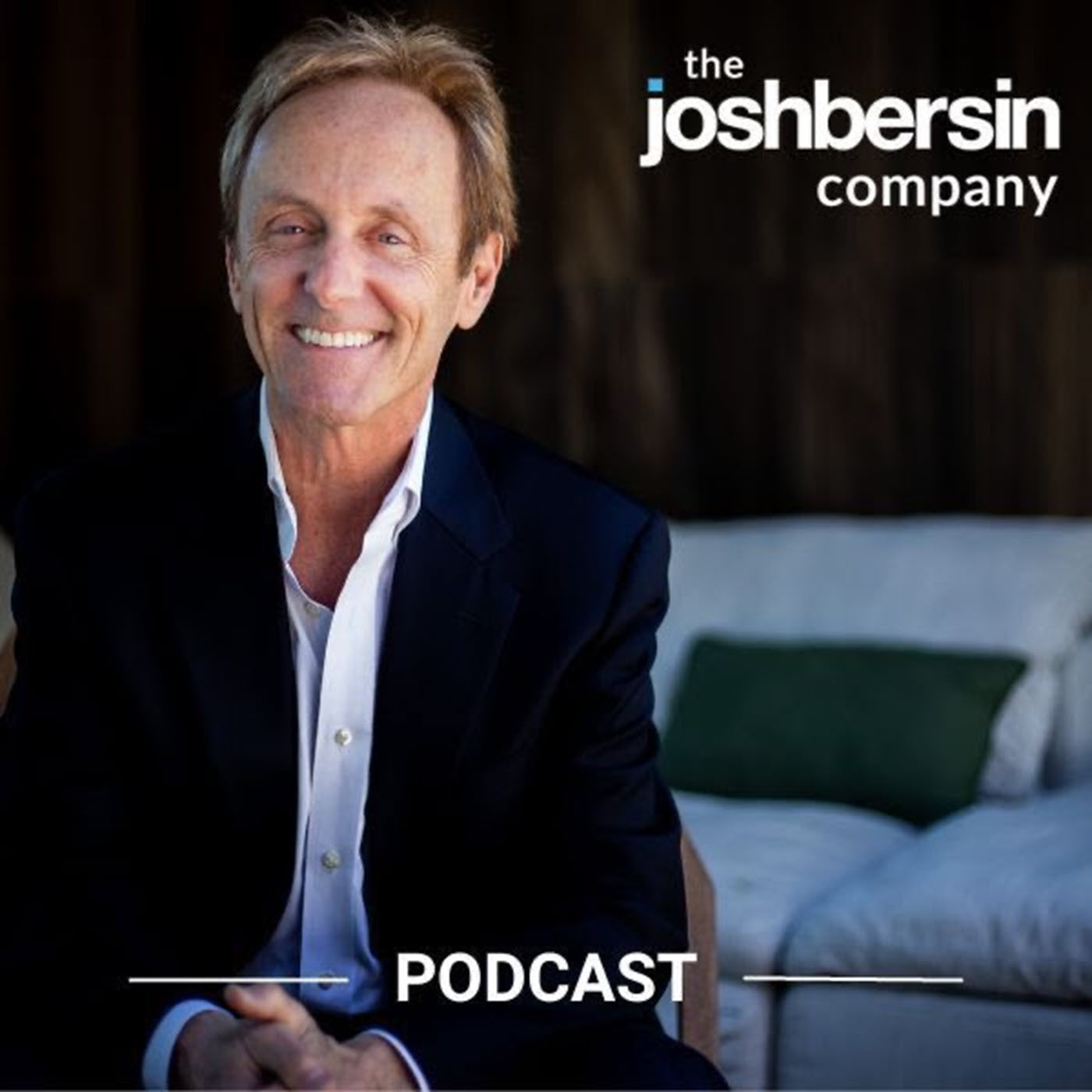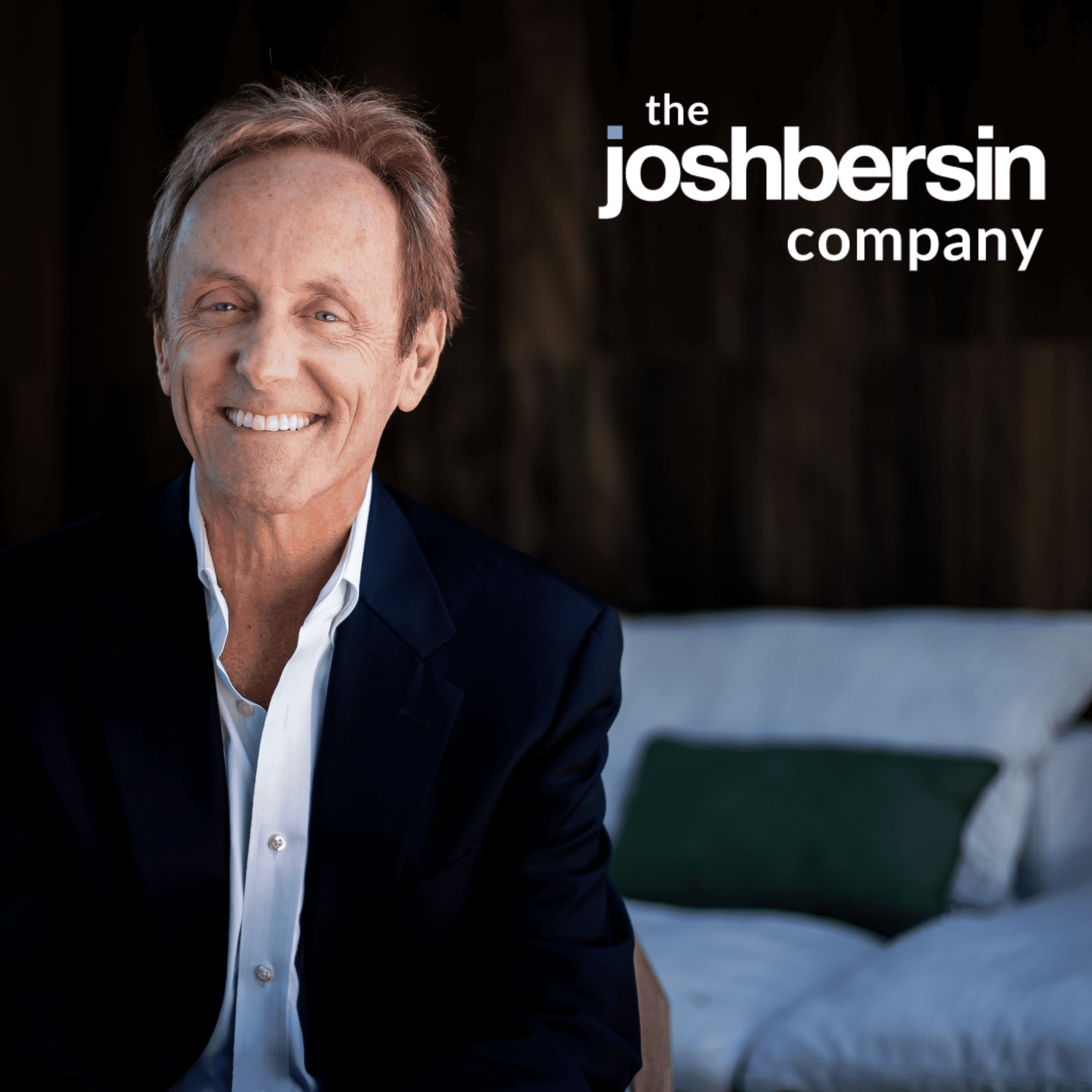Episode Transcript
[00:00:04] Speaker A: Our cultural transformation was really moving away from thinking in a very siloed way into a more end to end, collaborative, customer obsessed philosophy and really thinking about that growth mindset rather than fixed mindsets. And as I say, silo thinking.
[00:00:24] Speaker B: Welcome to a new episode of the what Works podcast series. That was Holly Quincy, Chief Talent Officer at Lloyd's Banking Group. In this episode, Cathy and Daris talks with Holly about the bank's ambitious transformation journey. The two explore how the organization has aligned its talent strategy with business goals to drive significant cultural change and financial savings. Let's take a listen.
[00:00:48] Speaker C: Holly, welcome to the what Works podcast. I'm so excited for our conversation.
[00:00:54] Speaker A: It's great to be here. Thanks, Kathy. Really great to have the conversation with you.
[00:00:59] Speaker C: Awesome. Well, really looking forward to it. So, Holly, as we get kicked off, tell us a little bit about yourself and about your company as well.
[00:01:07] Speaker A: Yes. So Lloyds Banking Group, the biggest bank in the UK, 350 year Heritage Organization of financial services.
I've been back in Lloyds for a couple of years now. I was actually a boomerang hire. So I left Lloyds 14 years years ago and have come back as the Chief Talent Officer to really help with the transformation of the organization. So we're on a five year transformation journey with a new CEO and really kind of how do we build the organization for the future through tech and talent.
[00:01:45] Speaker C: Wow. So tech and talent. Well, tell us more about that transformation journey. What's, what's behind that? What is Lloyds bank trying to accomplish and how does it fit with your work as the Chief Talent officer?
[00:02:00] Speaker A: Yes, it's quite an exciting journey. 3 billion investments, 67,000 employees, biggest bank in the UK, probably the biggest transformation in the UK right now. We've just sort of got out of the messy middle. So we're three years into that transformation. We'll be looking at the next phase of the strategy in 27. So we're at the part now where we're really thinking about our innovation. And as we sort of look back over the last three years and the two years I've been in the organization, we've really focused on customer experiences. So really thinking about how do we deliver better experiences for our customers for today and for tomorrow. So how are our products and services showing up to customers? How are we joining our products and services up? So if you have a mortgage with Lloyd's, you know, how are you getting home insurance as well? Or if you have car finance, how's our car insurance joining up with you? And how are we doing that all through our technology, so through our customer app, so speed to customer service, redefining our customers expectations and experiences and really thinking about those end to end life journeys and customer experiences. So that's what we're doing. You know from an investment perspective this is as I say 3 billion investment for the transformation and that is really thinking about how we're transforming our systems, our processes, skills, upskilling, reskilling of our people which leads into the talent agenda for me. But all of our ways of working as an organization. So as I say we're halfway through the transformation, we're moving at pace and we're delivering on our commitment so far to our investors. But how do we create more best days for our employee base and how we grow, focusing and change as we move forward?
[00:03:54] Speaker C: Cathy, it seems to be like a really really big transformation. What's the end to end goal of this transformation?
[00:04:02] Speaker A: So the first year was kind of learning what the organization said history was and how people were working. The technology, the skills, the capabilities.
I think year year two was the year that I joined. So then it was really thinking about all the changes from an OD perspective, from a people skills perspective, really moving towards skills based organization. What skills and capabilities we needed as an organization to really support the transformation of strategy moving forward. And that was really the talent play. We started to do a lot of work around the executive population. So the top 340 and I brought in house executive hiring. So we had been using a myriad of headhunters and actually decided to set up our own in house exec search team. And I'm proud to say today we're 94% of our hiring for executives is done in house with the in house team and has sold has saved the organization millions actually 7 million approximately over the last, over the last year. So we've changed a lot of the top three 340. That really nice blended solution of fresh thinking, insights from the external market, global mindset and the blended approach of people that understand the organization, have the heritage of the organization, have been here a while. So it's been really nice to see how we've kind of ended up with a, a really strong hybrid team of people that have been in Lloyd's and understand it versus those that can as I say bring that that fresh perspective. We've also brought in house the leadership development of that team for the top 340.
So we were outsourced prior to me to me coming back. So last year we brought that all in house and put the hold top 40 through an in house product which we called Prescient, which was a multifaceted product which looked at potential as well as capabilities and skills. And that was a product based on Hogan and Raven with 360 feedback and external benchmarking through CV benchmarking. Also a talking head which is interesting, people sort of talking about their leadership styles.
So that's what we've used from a leadership assessment perspective. And that all has kind of helped us look at the capabilities that we've got in our top 340 as we move forward into all of our systems and processes and technology kind of underpinning the organizational capability. This year it's all about innovation. So we're now looking at how do we thread innovation through everything that we do and have. We really got best in class technology to support every aspect of the business to deliver the best solutions for our customers. In addition, last year we also built out capability in India.
So in 2023 we made the decision, Cathy, to build a tech data digital hub in India. Now got two and a half thousand people in India, all working from sort of cybersecurity, it, cloud architecture, engineering faculties to build the tech capability for us as an organization. And that was something I led from a recruitment perspective from employee number one in India. So I think now it's about how do we look at our technology, how do we bring innovation into every aspect of what we're doing. And then in 2026 we'll start to see the visions of the new phase of the Strategy to deliver 27 to 30.
[00:07:48] Speaker C: How did you define what to focus.
[00:07:51] Speaker A: On when you come into an organization and you start to look at taking the business strategy and translating that into a people strategy, it was really clear when we looked at the population of the top 340 actually there's some great capability in the organization, but there was also a need to refresh and really bring in skills of the future so that we were kind of having that blend of skills for today and skills for tomorrow. And therefore there was a whole piece of work done on what are the critical roles across the top 340, what are the skills we need for the future? And really two, three years out because the world is going to never move this slowly. So I think two, three years out, we're not sure what we might need beyond that with Gen AI, et cetera coming in and then doing a skills capability match.
So really thinking about who have we got in our top 340 from a succession planning perspective that really can get to top table gec, our group executive committee roles over the next three to five years. Where are the skills and capability gaps? And then where do we really need to rethink the capability that we have in some of those critical roles? So that was really the starting point for us to say we needed to shift some of that capability in the top 300. That then will create the messaging down through the organization. And I was also looking at the commercials. You know, we were spending 10 million a year just on executive leadership assessment methodology, both for hiring and for development purposes and executive hiring. You know, we were heavily reliant on external third party suppliers. And bringing that capability in house, really crown jewels of any organization is your leadership, your top, your top 300 or your top 100 leaders.
And therefore, you know, having, having that outsource didn't feel comfortable, actually really wanted to build that capability in house, therefore kind of bringing that in and building our own in house products has given us such control over the data, the people, you know, it's less exposing for us in the external market and therefore we've now got a richness of information about our own people that we can use to help develop as we move forward.
[00:10:17] Speaker C: What were some of the capabilities for the executives that were new? Was it more around the leadership capabilities was more technical? What are some examples of where you expanded these kind of capabilities that you didn't have in the past?
[00:10:34] Speaker A: Yeah, so I think there were a few things and I think it was also linked to our cultural transformation that's been running alongside what we've been doing from a talent perspective. So our cultural transformation was really moving away from thinking in a very siloed way into a more end to end, collaborative, customer obsessed philosophy and really thinking about that growth mindset rather than fixed mindsets and that, as I say, silo thinking. So you know, much more around end to end customer experiences and employee experiences.
And what we've seen is a real shift when we've looked at that population as to that thinking. So transforming at scale has been one of the criteria. So lots of people in Lloyds had not done big transformation leadership transformation projects before. So that really transforming at scale, using data for insights. So really having the analytical skills and really having the commerciality. So I think there was a real gap for us around. We had a very resilient workforce. So interestingly actually resilient plays quite high in Lloyds. But having commerciality is something around the culture that we're also trying to shift at the moment. So that kind of analytical underpinned by the Technical capability, AI tech. Really thinking about ourselves as almost sort of a tech company that does banking rather than a bank with good tech. You know, that mindset has been a cultural transformation journey for us over the last three years and continues to be so.
[00:12:27] Speaker C: Wow. So it really ties into your culture transformation. As you said, going forward you're going to cascade that. Is it the same kind of skills and capabilities that you're now going to build further down in the organization? How is that going to work?
[00:12:42] Speaker A: Yeah, so we started with the top 340.
We launched a program called Grow with Purpose that was a two day immersive. Every leader and the top 340 went through the program of Grow with Purpose and then that cascaded down into the organization through messaging and teams. So you know, we would ask leaders to take that back to their teams and do modules of Grow with Purpose with their teams. So we've kind of cascaded those messages down through the organization and as we move forward, we'll have some talent management programs that do a deeper dive on some aspects. So whether that's growth strategies from people in succession plans for P and L roles or our coup or CIO roles, you know, really thinking about how we can dive deeper on our talent management programs and really kind of build the global mindset and expert thinking around those cohorts. And then what we're doing is looking at programs that we can roll out below the top 340 that will emulate that but in a less modular way. So perhaps won't be as intense for the lower grades, but how we'll roll that out is happening actually this year.
[00:13:59] Speaker C: That's great. So that's kind of development side. Are you also using the same kind of approaches for recruiting?
[00:14:06] Speaker A: I think from a recruiting perspective, I mean, we remodeled the whole of the recruitment function in 2024, so brought in a new leader from Amazon Web Services. Delighted that they were able to join us and so built some capability there and realigned the recruitment function to archetypes. So kind of the ecosystems across the organization and really shifted the model for ta. Also really thinking about building the capability around campaign hiring and that demand and supply piece and working really closely with our business partners and our strategic workforce planning teams to look at demand planning and how we build certain archetypes strengths across the organization depending on our needs from a business and customer perspective.
So we've remodeled TA again. We've done a lot of Build of capability and talent acquisition and we've really looked at how we can reduce our agency spend There as well. So quite an in house build theme in 2024. So it's been super exciting. And then how we work with reward is we always look at the end to end now. So. So it's a real leaning collaborate, partnership with reward. And we're always looking at kind of especially in the executive space, you know, what are the reward packages up front before we take people through a process with Lloyds. But certainly it's a very close collaboration with the reward team and certainly kind of from an end to end perspective, very much working with.
[00:15:49] Speaker C: Yeah, no, that, that totally makes sense. I know you already highlighted a few of these results of the journey so far, like the savings on executive assessments and recruiting, for example. Any other results that you'd like to highlight as you're in the middle of that? I realize more to come obviously, but anything else that you'd like to share?
[00:16:08] Speaker A: Yeah, I mean look, it's a big transformation. Fewer people build of capability, much more tech implementation. You know, over my division alone we saved 20 million in 2024. And that's a combination of in house agency, you know, savings of bringing in house talent acquisition and saving the agency fees. The headhunter piece that I talked about from an exec hiring perspective and also the leadership assessment and development piece that we brought in house. So big kind of cluster avoidance there of just under 20 million. So it's a huge we, you know, and as we look across the people function, obviously the numbers are much bigger than that. But that's just in my world, I think as we go forward, you know, we're still hiring between 13 and 14,000 people a year.
We're still hiring just shy of 100 execs a year. So you know, when we look at the numbers and we put the top 340 through, through our internal leadership development product in 2024 because we've got a team of now that sit, sit within my, within my area.
So lots, lots of transformation, lots of change, lots of exciting things ahead as we land the talent programs this year. We'll then be kind of moving forward for 2026 in terms of next phase of strategy.
[00:17:43] Speaker C: Well, Holly, this was so fantastic. Thank you so much for taking the time. I know we could have talked for another few hours on this, but really appreciate you sharing your transformation journey and the culture that you've created and how you've aligned your talent strategy with the business strategy at such a critical time. So really appreciate your time.
[00:18:03] Speaker A: Well, thank you, Kathy. Really enjoyed talking to you.
[00:18:09] Speaker C: Thanks for listening in to this fascinating discussion. With Holly Quincy. Holly shared about the company's ambitious transformation journey and how she aligned the company's talent strategy with the business goals fostering a culture of innovation.
At the same time, the company also saved £20 million in year one just in Holly's area alone, showing how efficiency and impact really go hand in hand. Until next time, keep pushing the boundaries of what works in your organization.


